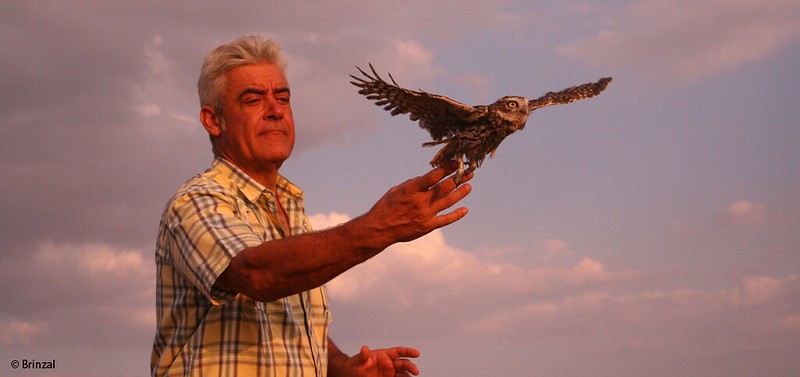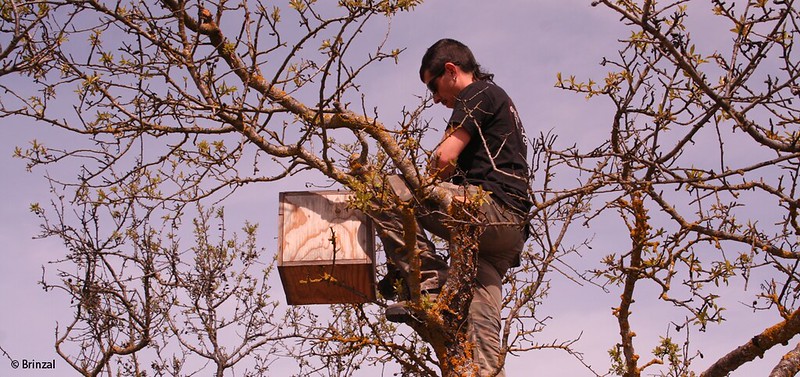The Brinzal Recovery Centre for nocturnal birds of prey is located in the Casa de Campo, right in the heart of Madrid, since 1986. It is the only centre in Spain striving to ensure that our nights still have the presence of these predators. This makes it not only a place of reference in the investigation of these birds, but also a leader centre for their recovery.
But, in order to know more about these birds and about Brinzal, we have conducted this exclusive interview to its coordinator, Patricia Orejas.
Question: From Birding140 we agree that Brinzal is the leader in the recovery of nocturnal birds of prey, as well as with regard to information and protection of these birds. But, what means are available to Brinzal to be such an exceptional centre? What makes you different from the rest?
Answer: Thank you very much for the compliment! I will start with the second question: the difference with other centres is the specialisation in a very specific group of birds. Everything in our recovery centre is designed and adapted to the species we work with (nocturnal birds of prey and nightjars): facilities, protocols, treatments, feeding, etc. That makes us optimize resources and thus the percentage of recovery we have now is about 70 %. Moreover, we are constantly studying, learning and innovating, which makes us incorporate new protocols and update the rehabilitation techniques that allow us to improve, among other things, patients’ adaptation to the nature once they are released.
As regards the means, significantly fewer than we would like!! Especially, the budget is much more limited than what we would need… but which centre doesn’t have this problem?As regards the facilities, we have been expanding and improving them little by little, we have a hospitalisation area, an incubation and breeding area, and quite a few recovery facilities, including several flight units of great dimensions for flying and hunting practices. As regards the staff, we are four people working for the association (and that also includes the projects we develop outside the centre), but we have a nourished and essential group of volunteers, without whom we wouldn’t be able to carry out all the work.
Question: We are facing an important decline in this kind of birds of prey. For this reason, we would like to know which species have been admitted in your centre in greater number during the last years? And for what reasons?
Answer: Scops Owls and Little Owls. The first ones, because they breed in very populated areas (urban parks, gardens…) and many fledglings fall off to the ground when they are having their first flights; the latter, because apart from also breeding close to humans, they are frequently run over.
Question: Let’s imagine we are a bird of prey coming to the centre. Through which dependencies, hands and techniques would we pass from our arrival to our release?
Answer: In the first place, birds go to the nursery, where they are examined and all kinds of tests are done. After this step, first aid is applied if necessary. Up to this point, we try not to handle the animal for more than half an hour. This way we avoid unnecessary stress. In addition, for extreme cases we have an ICU appropriately equipped. When the bird is recovered, we start the rehabilitation process. We want the animal to be able to fly and hung by itself. For that end, we have some flight units with hunting grounds where the predators can develop their activities before being released.
Question: In your opinion, at the present time, which species is in biggest need for help?
Answer: Without a doubt, the Little Owl and the Barn Owl, the two species more bound to agricultural habitats and closer to humans. They are being really affected by the intensification of agriculture, by the increase in roads and by the lack of nesting sites.
Question: We assume the goal of the centre itself is to reach that magical moment when the sponsor releases the recovered bird. Nowadays, which bird is the easiest to recover? Is there any species which is more popular among the sponsors?
Answer: The easiest ones to recover are Little Owls: they are hard nuts despite their size, and they are quieter than the rest, which makes handle captivity better. Sponsors generally prefer the Eurasian Eagle-Owl, due to its spectacular nature, but if the bird is being sponsored by a kid, Little Owls are more demanded.
Question: Apart from the bird recovery work, what other fronts are open at Brinzal?
Answer: Ongoing projects, apart from the recovery centre: Un Mochuelo en cada olivo (a Little Owl in Every Olive Tree), this year in phase III with the support of the Council for the Environment of the Community of Madrid. Apart from goals and activities in phase II, like the “AgroSOStenible” project, with farmers from Madrid and Castile-La Mancha. Also, the conservation and study of Scops Owl populations in urban areas, where we are still investigating the causes of its decline, as well as captivity breeding…
Question: To conclude, we would like you to briefly remind us of a number of recommendations in case we find a hurt or helpless nocturnal bird of prey.
Answer: In the first place, we would have to make sure that the bird needs our help. Then we would have to take it, covering it with a piece of clothing. This way, the best would be to put it in a box with holes and leave it in a quiet and dark place. After that, call BRINZAL URGENTLY on the numbers 91 479 45 65 (business hours) and 670 93 32 40 (mobile phone). While waiting, under no circumstances should you feed or water the bird.
From these lines, we want to thank the work carried out by our friends at Brinzal. Moreover, we hope some of our readers will be encouraged to join their nourished group of volunteers or even sponsor one of these beautiful birds.













